Pruning Perennial Salvias
This is all about pruning perennial salvias so the plants stay healthy and flower in abundance.
Salvias are popular all the world over. I’ve seen them growing in England, the Canary Islands, Mexico, and many different places in the US. These plants are so versatile because they can comfortably fit into many styles of gardens, from old-fashioned cottage right up to modern, simplistic ones.
They grow well here in California, where our Mediterranean climate suits them to a tee, and they are loved because they have a long bloom time. Their non-thirsty ways make sense, given our lack of rainfall for many years.
NOTE: This was published in 2014. Rather than do an extensive update on this, I’ve done a newer post on Pruning & Trimming 3 Types Of Salvias In Spring Or Fall with more information you’ll want to check out.
I was a San Francisco Bay Area professional gardener for over 20 years. This is where I first learned all about perennial salvias. The nursery where I worked in Berkeley sold many different species and varieties. This post is all about sharing what I know about pruning the two most popular types of perennial salvias you probably have in your garden.
This is Salvia officinalis (with the lavender flower) or Culinary sage, which is perennial here in Santa Barbara but an annual in colder climates. It is a semi-shrubby (or shrublet if you prefer to call it that), woody salvia which falls into the pruning category 1. It’s smaller than the greggi below, so I would only cut it back by 6-8″ after flowering. Then, you can dry the leaves to use for cooking.
I’m going to talk about pruning salvias here in coastal California. You can tweak the process for your climate zone if they’re also perennials where you live. The first type is the herbaceous salvias with woody stems. These are the shrubby salvias.
A few that fall into this category that you may know are Salvia greggii (there are so many of these!), S. chamaedryoides, S. coccinea and S. microphylla. There are quite a few microphyllas, too – the one you see in the video is “Hot Lips.” These you prune back after flowering but not all the way.
This is Salvia greggi, a common landscape plant. It has woody stems & also falls in the 1st pruning category. After each flowering cycle, I would take it down by at least a foot.
Take them back to at least where the first set of foliage starts on the flower stem – this could be a pinch, or you can take them down further if you’d like. I learned the hard way on an established plant to not cut it down to 3″. It never fully came back; out it came, and into the compost it went.
With these types of salvias, I thin out the middle a bit and then shape the plant so it’s pleasing to the eye. They usually go through 3 bloom cycles throughout the year here. We have a long growing season. I would give them a mild pruning in the fall and a more intense one in the late winter or early spring if needed.
There’s the whole fall pruning versus spring pruning debate. I don’t prune the plants with a little more substance in the fall and leave them be over the winter. Then, I do an early spring haircut and shaping.
Be sure to take out any growth that has died over the winter. If you don’t give these salvias some pruning, they will get extremely woody and won’t repeat bloom like you want them to.
In my years working with salvias, I found that some needed to be replaced before or around the 5-year mark. This is especially true with this type. Some perennials don’t live forever, after all.
They tend to get straggly over time. No worries if you have to replace any because they grow fast, especially if you purchase a 1-gallon plant.
This is Salvia leucantha or Mexican Bush Sage. They’re deciduous salvias with soft stems & fall into the 2nd pruning category. Once the stems have flowered & died off, cut them to the ground.
Second up are the deciduous herbaceous salvias. The old growth eventually dies out, and the fresh new growth emerges from the base of the base.
They have softer stems that either die off and/or freeze. Plants that fall into this category are Salvia elegans, S. guaranitica, s. leucantha, s. waverley and s. patens. In the video you see me working on a Salvia leucantha or Mexican Bush Sage. These salvias are very simple to prune.
When it’s through flowering, cut those stems down to the ground. It needs to be done once or twice a year. They will still flower if you don’t, but you’ll get more blooms, and the plant will look 100% better if you do.
Here in Santa Barbara, the leucanthas and the Waverleys get huge. Many of them are not cut back, leaving a tangle of dead, twisted stems, and they look like a ratty mess. It’s best to give them the shearing back they need.
You’ll see the soft new growth appearing at the base. Another thing to know is that these salvias tend to spread as they grow, so you might have to do a bit of dividing.
This is Salvia spathacea or Hummingbird sage, which is also a deciduous perennial, pruning category 2. In the left foreground is the new growth. Cut the flower stalks (the old growth) in the back down to the ground after they’re completely spent.
Knowing what kind of salvia you have is best before jumping into action with the pruners. Both of these types of salvias benefit from a good haircut.
You’ll get a much better bloom and shape if you do so. No ratty-looking plants in our gardens, please!
Note: This was published in 2014. Rather than do an extensive update on this, I’ve done a newer post on Pruning & Trimming 3 Types Of Salvias In Spring Or Fall with more information you’ll want to check out.
In the video below, you’ll see me pruning these two types of salvias. Enjoy!
This post may contain affiliate links, you can read our policies here.
- About the Author
- Latest Posts
Nell, the founder of Joy Us garden, was born into a gardening family and grew up in Connecticut’s countryside. After living in Boston, New York, San Francisco, & Santa Barbara, she now calls the Arizona desert home. She studied horticulture & garden design, working in the field all her life. Nell is a gardener, designer, blogger, Youtube creator, & author. She’s been gardening for a very long time & wants to share what she’s learned with you.
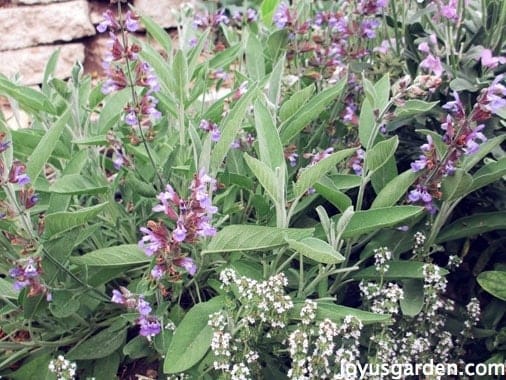
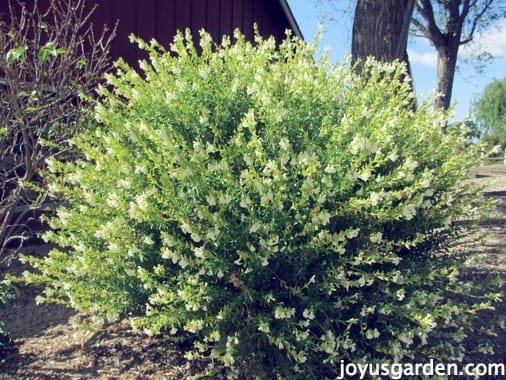
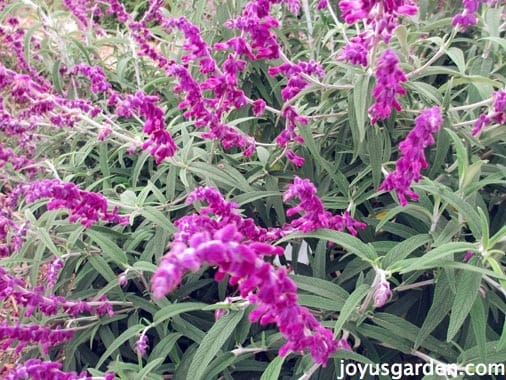
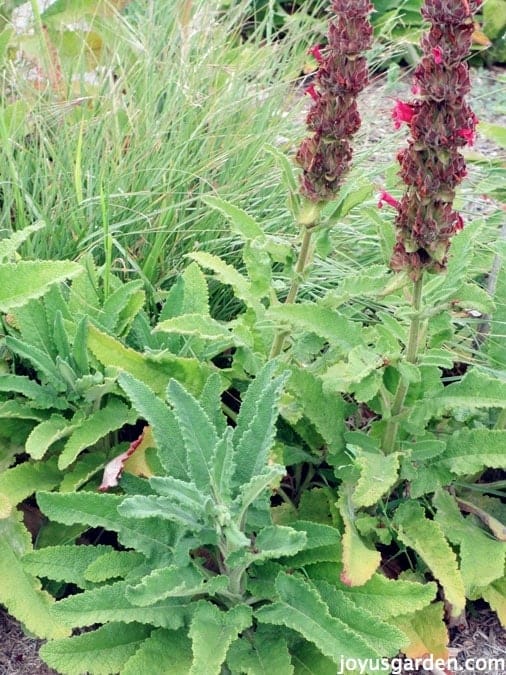

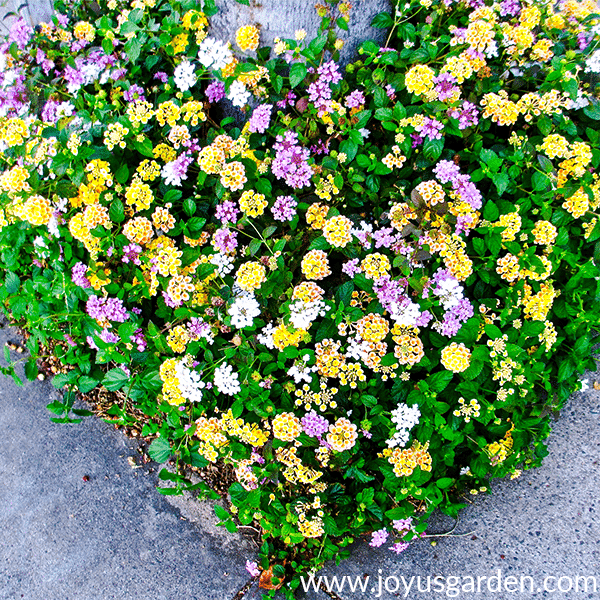
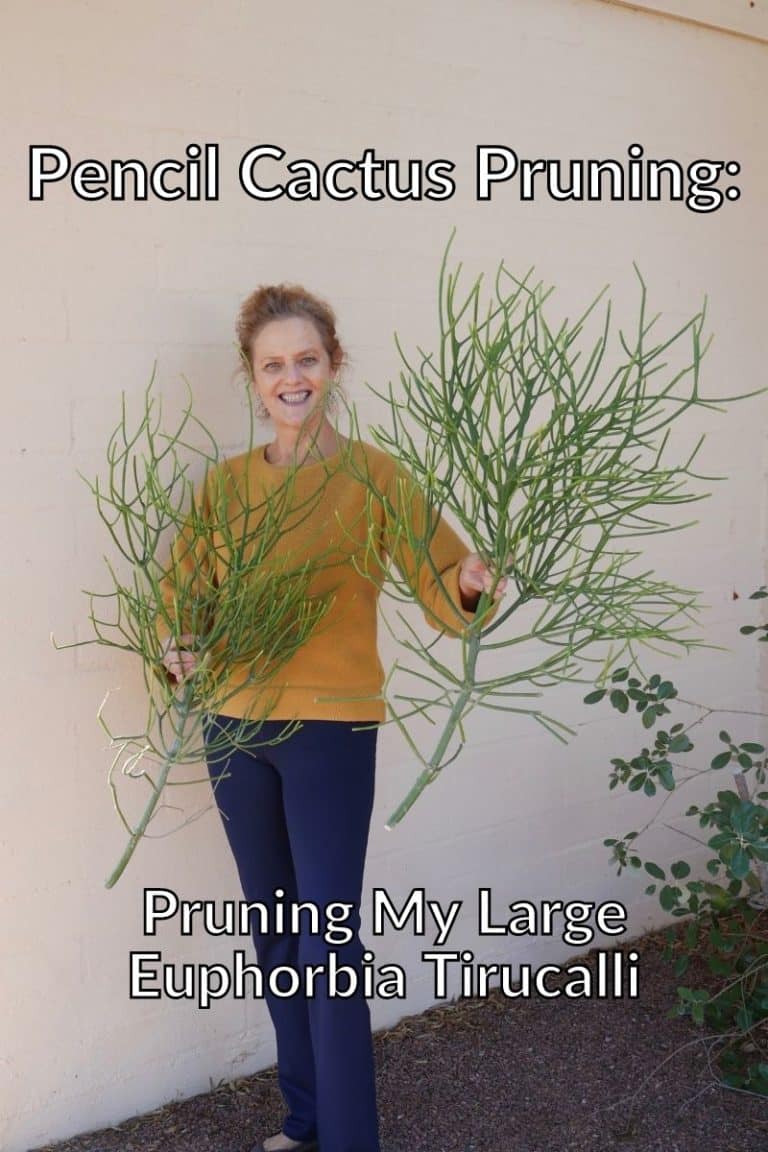
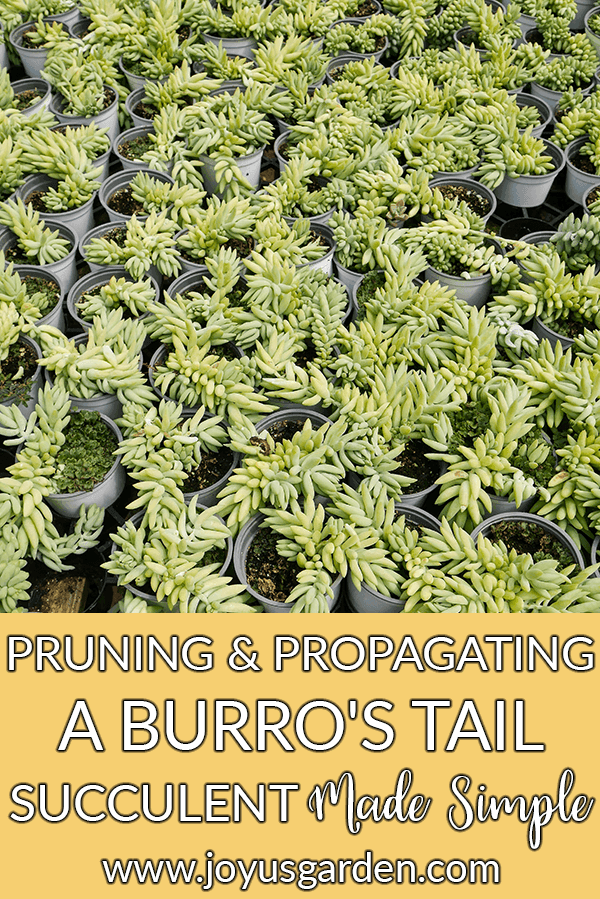
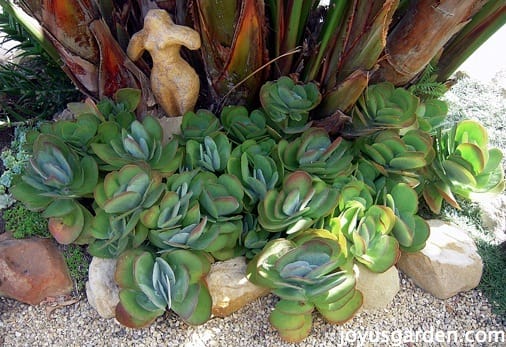

Great info. I live in Hatch, Utah, at 7200 ft elevation. Winters are harsh, so I know I have to replace my salvias every year. The reason I bought them, aside from being beautiful and hardy, is because deer, chipmunks, and squirrels, don’t touch them. This is important for people who are confronted by deer and critters. It is hard to find flowering plants that don’t get eaten by animals. Pass the word. Salvias are OK. Also, smoke bushes and serrated-leaf grasses have proven to be plants that animals will not touch. Thanks for all your advice.
Maria – You’re certainly welcome. Thank you for sharing your experience regarding deer & salvias (plus the other plants) with us. It’s not something I’ve ever had a lot of hand’s on experience with so it’s good to know. Nell
Hi Nell, another salvia question, Amistad in this case. I live in Millbrae, the Bay Area, and we have them in our downtown planters. It’s January and they are still blooming but looking a bit raggy. When should they be pruned and how much? It’s our first year with them. Thanks so much. Carol
Hi Carol – That’s a gorgeous plant with beautiful blooms. It’s a hybrid cross which is deciduous herbaceous salvia. In your area, you need to give it a hard pruning in late winter & then give it a lighter mid-season pruning to keep it looking good & encourage even more blooms. Nell
I live in zone 6-7 inEastern Ky. We had temps below 0 for days on end this winter.I have hot lips salvia, do you think they will live?
Hi Brenda – “HL” are hardy to 15F. They can survive lower temps with cover. If you covered them well, there’s a chance they’ll make it. Nell
Hi Nell! Wow, you are so knowledgeable on salvia! The type I have, for whatever reason, continues to splay out in the middle, like an animal trampled on it or something – but I know from other research this is likely due to a pruning issue. I live in Indiana and they’ve been planted for 3 years so they are quite large now. When/how should I handle pruning it back? They are a purple/blue color and bloom all summer long.
Hi Sarah – I learned a lot about salvias when I worked at a nursery & also when I was a professional gardener. I’m not sure what salvia you have but I hope this helps you out: https://www.joyusgarden.com/pruning-salvias/ How you prune it depends on the type. Nell